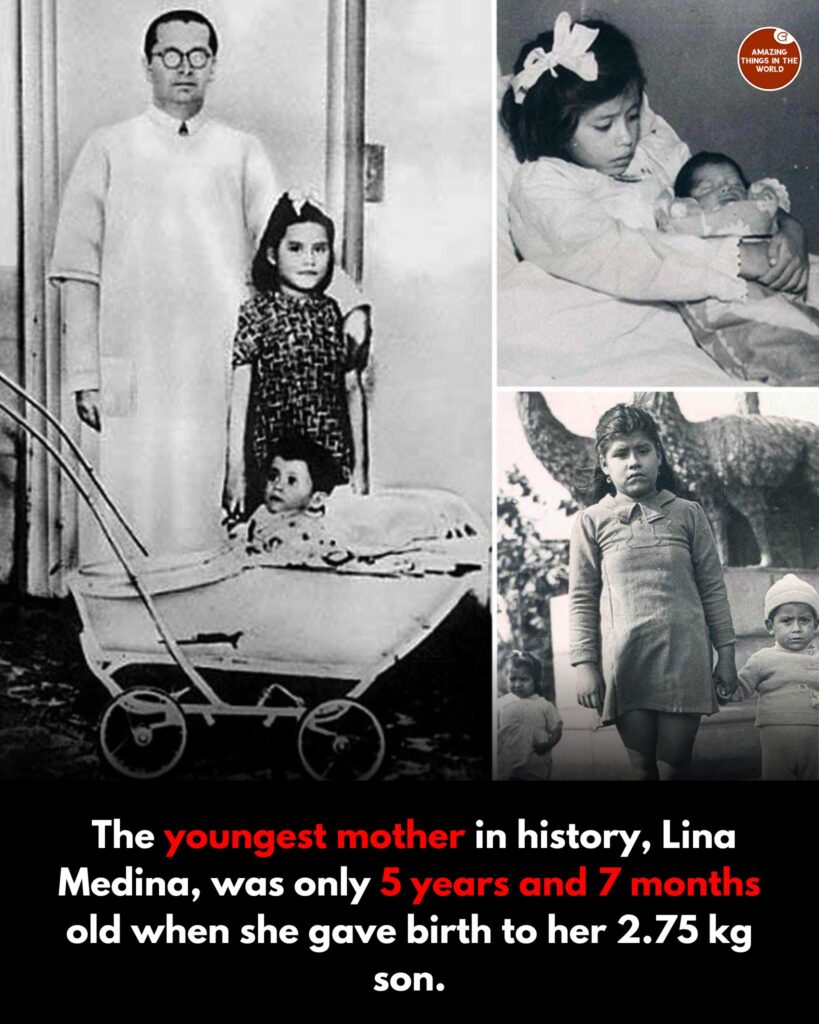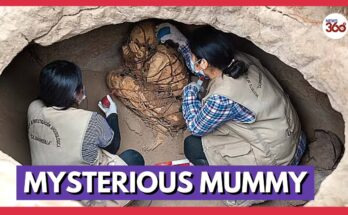
Lina Medina: The Youngest Mother in Medical History
Lina Marcela Medina, born on September 23, 1933, in a small Andean village in Peru, holds the tragic and astonishing record as the youngest confirmed mother in medical history. In May 1939, at only five years and seven months old, she gave birth to a baby boy by caesarean section. Her son, named Gerardo, weighed approximately 2.75 kilograms (about 6 pounds) at birth. Doctors performed a caesarean delivery because Lina’s small pelvis was not developed enough for a natural birth.
Lina’s case first drew attention when her parents noticed her abdomen growing unusually large. Concerned that she might have a tumor, they took her to doctors in Pisco and later to specialists in Lima. To their shock, medical examinations and X-rays confirmed that Lina was seven months pregnant. Further tests revealed that she had a rare condition called precocious puberty, which causes the body to undergo puberty at an extremely early age. In Lina’s case, she began menstruating at just eight months old, and her breasts developed by the age of four.
Gerardo Medina was raised believing Lina was his sister. Lina’s parents assumed parental responsibility due to her young age. It was not until he was around ten years old that Gerardo learned the truth. He lived a relatively healthy life but sadly passed away at the age of 40 from a bone disease.
The identity of the father was never officially confirmed. Lina’s father was arrested on suspicion of sexual abuse but was later released due to lack of evidence. Lina herself never publicly revealed the circumstances that led to her pregnancy, and the case remains surrounded by mystery. Her silence is often attributed to trauma and a desire to protect her privacy.
Lina’s case became widely documented in medical literature and continues to be studied by doctors, psychologists, and historians. It raised serious questions about child safety, sexual abuse, medical ethics, and the biological possibilities of human development. Doctors around the world examined her case to understand how such an early pregnancy was physically possible, while society questioned how such a tragedy could occur in the first place.
Reporters and researchers attempted to speak with Lina throughout her life, but she repeatedly declined interviews. Wanting to live quietly, she chose to work as a secretary in a clinic in Lima, the same hospital where she gave birth. She later married and had a second son in adulthood. Her family has continued to guard her privacy.
Today, Lina Medina’s story remains a powerful and heartbreaking example of the intersection between medical rarity and human tragedy. It continues to spark conversations about protecting children, ensuring justice in cases of abuse, and understanding the limits of early human development.


